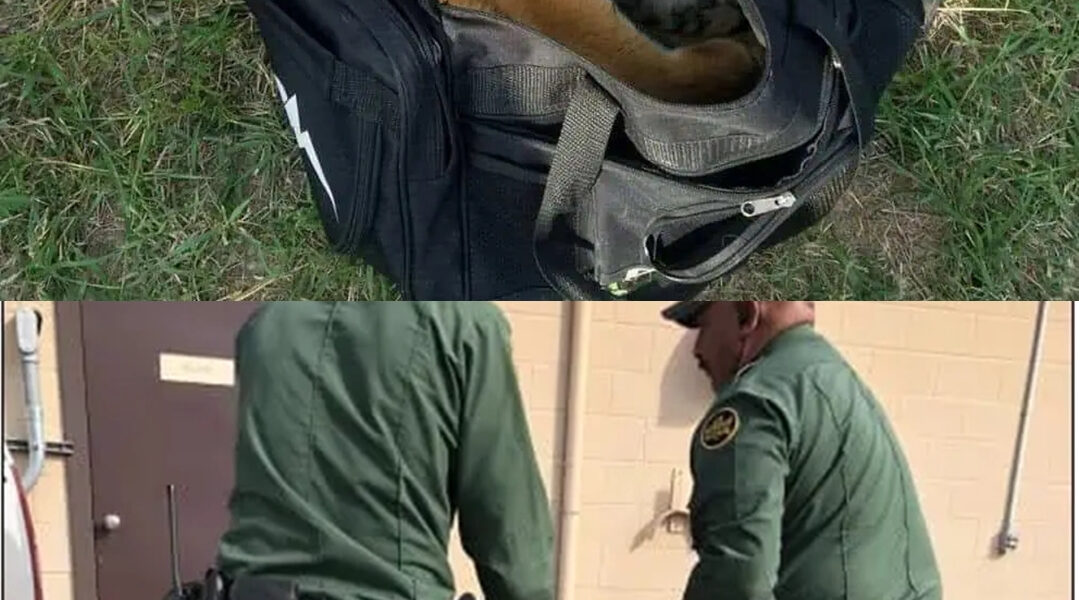The sun was just beginning to lower over Brownsville, Texas, casting long shadows across the Rio Grande. For Border Patrol agents stationed there, it was another tense day along one of the most active stretches of the U.S.-Mexico border. Smugglers, migrants, and traffickers often moved under the cover of dusk, hoping to evade the watchful eyes of the patrol.

That afternoon, three figures were spotted wading through the river. Agents tracked their movements carefully. At first, it seemed like a routine interception — just another group attempting an illegal crossing. But something unusual caught their attention: one of the men carried a large black duffel bag, heavy and oddly shaped.
As the agents closed in, the suspects suddenly dropped the bag and bolted back toward Mexico. Within seconds, they vanished into the brush, leaving their mysterious cargo behind.
What the agents found when they unzipped the bag stopped them cold.
A Shocking Discovery

Inside, curled tightly in the darkness, was not money, not drugs, not weapons — but a tiger cub. Barely three to four months old, the animal lay motionless, its striped fur slick with sweat, its small chest rising and falling with labored breaths. At first glance, it looked lifeless. But then, faintly, they saw movement. The cub was still alive.
The men had abandoned not only their contraband but a fragile, endangered life.
A Race Against Time

The agents didn’t hesitate. Carefully lifting the cub from the bag, they rushed it to the Gladys Porter Zoo, a facility equipped to handle exotic animals in distress. Veterinarians there immediately began working to stabilize the young tiger.
Whether it had been drugged or simply exhausted from the ordeal remained unclear, but soon, with fluids, rest, and care, the cub stirred. Its eyes opened. Its breathing steadied. What had begun as a routine border enforcement turned into a life-saving mission.
The Larger Crisis

In the following days, Irma Chapa, communications director for the Border Patrol, shared the update the world had been waiting for: the tiger cub was in “excellent condition” and expected to make a full recovery.
But behind the relief of that single rescue lies a sobering truth. Experts estimate that there are around 5,000 tigers living in captivity in the United States, compared to only about 3,200 tigers left in the wild worldwide. This astonishing imbalance is fueled by illegal smuggling, breeding operations, and the sale of exotic animals to private owners.
Many of these animals end up in roadside zoos, sold into the exotic pet trade, or worse — disappearing entirely without record. Each one represents not only an individual life but also a threat to conservation efforts for a species already on the brink.
A Symbol of Both Hope and Warning
For the little cub found on the Rio Grande, the story ended with survival, safety, and a chance at a better life. But its journey also served as a grim reminder of the hidden networks that traffic in living creatures as if they were disposable goods.
A bag abandoned on a riverbank could have been the end. Instead, it became the beginning of a new story — one where vigilance, compassion, and quick action saved a life.
Yet the larger question remains: how many more “Zuko-like” cubs, as some began to nickname the survivor, will never be found?
Because for every tiger rescued, countless others slip through the cracks, carried across borders in silence, vanishing into cages where no one is watching.




